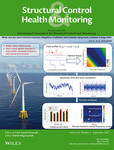A data-driven hysteresis model
Summary
Hysteresis is a special type of behavior encountered in various fields of science and engineering. In civil engineering and smart structures, the Bouc–Wen model has been used extensively to represent materials with hysteresis. This model consists of a first-order scalar nonlinear differential equation that includes a few parameters for the standard version of the model and a large number of parameters for its extended versions. This said, whilst the properties of the standard Bouc–Wen model have been studied mathematically, the extensions of the model have only been studied using numerical simulations so that there are no mathematical formulas for the hysteresis loops that these extended models generate. Motivated by this issue, I propose a new model of hysteresis that does not include a finite number of parameters but rather includes several functions that are updated using experimental data. This data-driven model is able to produce loops or multiple loops with asymmetry, pinching, and degrading; and mathematical formulas for the hysteresis loops that the model generates are available.
CONFLICT OF INTEREST
The author declares no conflict of interest.
Open Research
DATA AVAILABILITY STATEMENT
Data sharing not applicable to this article as no datasets were generated or analyzed during the current study.




